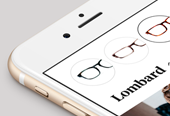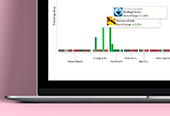Modernizing Pet Care
Role
Product Design
Design Strategy
Design Research
Platform
iOS (React Native)
Android (React Native)
Scope
1.0 Launch
Petabyte is a startup that makes software used by veterinarians to run their practices. They asked me to design an app to provide pet parents at their veterinarians' clinics with a better way to manage their pets' care.
I led the design strategy, research and product design of the Boop app, available for both iOS and Android devices. It integrates with their existing platform, enabling a seamless experience for both vets and pet parents that radically improves on efficiency and communication. For launch, I focused on getting the basics right and on creating an indispensable tool for pet parents but I followed up with a round of generative research that will pave the way for the next phase of work.


Getting 'good enough' right
Like many startups, Petabyte wanted their app launched yesterday, so I had to move quickly to: settle on a consumer-facing design language; nail down shifting requirements; create a platform-agnostic, scaleable information architecture; and complete user flows and screens all within a couple of months.
Petabyte didn't have a design process that left room for experimentation, iteration or validation. Instead, they had a history of rushing design and development only to realize at the last minute that the end product wasn't something that could be release. This had already happened twice with the app I was asked to design.
My challenge was to implement a process that was 'good enough' to lead to a solid, if fairly functional app, but also fast-paced enough to gain the support of stakeholders.


Key Takeaways
Years of doing something similar many times over—parachuting into a startup with little to no internal design expertise and an engineering-led process—has given me the practical know-how to get work done effectively in this environment. On the flip side, completing a design Master's Degree and spending the early years of my career at large corporations with big, mature design teams, I know what good process looks like when startup constraints don't exist.
This mix of experience informs my decisionmaking about which corners to cut, what parts of the process to shrink down or reorder and what to insist upon. For example, I shifted user testing so it would take place immediately post-launch. This meant that we weren't able to catch issues as early as is ideal, but it also meant that we hit our launch deadline and, because we were very quick, we were able to turn around fixes before the clinics had ramped up sales. This choice also meant that user testing was more straightforward, since we were able to share an app with real data with our testers rather than a design prototype.
Being an effective design lead means adjusting to the constraints in front of you, not going for a one-size-fits-all approach and there's no for past experience.











